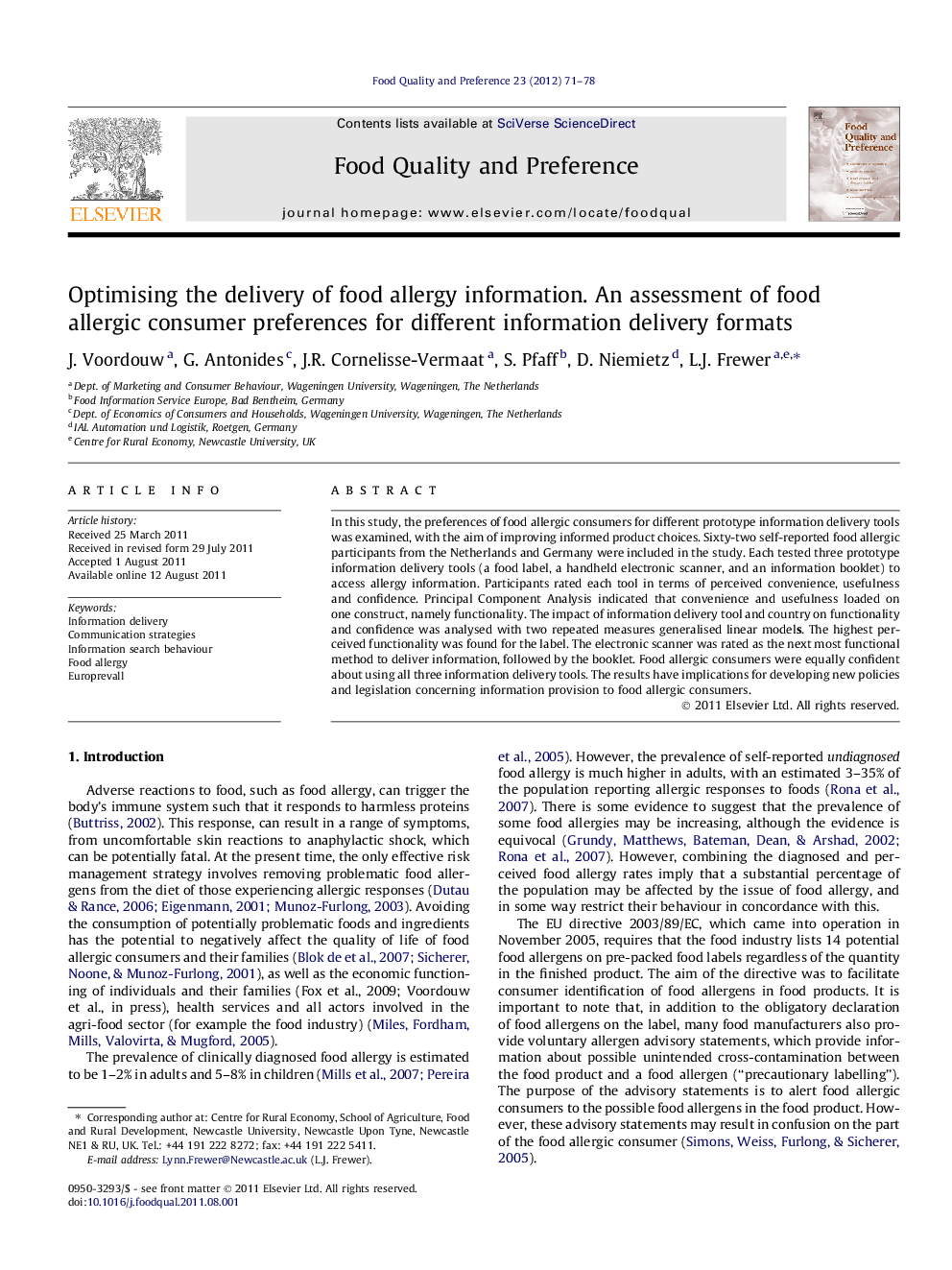| Article ID | Journal | Published Year | Pages | File Type |
|---|---|---|---|---|
| 4317654 | Food Quality and Preference | 2012 | 8 Pages |
In this study, the preferences of food allergic consumers for different prototype information delivery tools was examined, with the aim of improving informed product choices. Sixty-two self-reported food allergic participants from the Netherlands and Germany were included in the study. Each tested three prototype information delivery tools (a food label, a handheld electronic scanner, and an information booklet) to access allergy information. Participants rated each tool in terms of perceived convenience, usefulness and confidence. Principal Component Analysis indicated that convenience and usefulness loaded on one construct, namely functionality. The impact of information delivery tool and country on functionality and confidence was analysed with two repeated measures generalised linear models. The highest perceived functionality was found for the label. The electronic scanner was rated as the next most functional method to deliver information, followed by the booklet. Food allergic consumers were equally confident about using all three information delivery tools. The results have implications for developing new policies and legislation concerning information provision to food allergic consumers.
► For food allergic consumers, safe food choices depend on effective information delivery. ► Consumer preferences for allergen information were assessed. ► Food allergic consumers prefer (effective) allergen labelling on products. ► Extra information provided via an ITC scanner can deliver competitive advantage to industries. ► Implementing a harmonised international symbolic allergen strategy is a policy priority.
